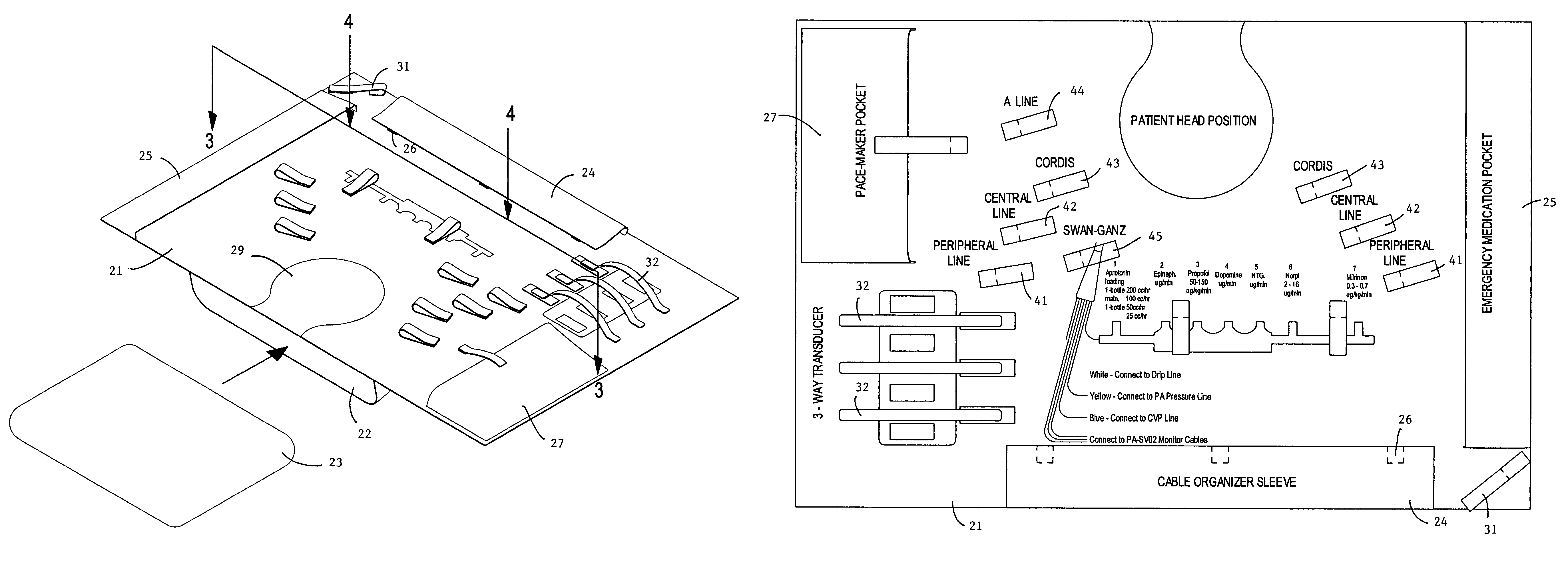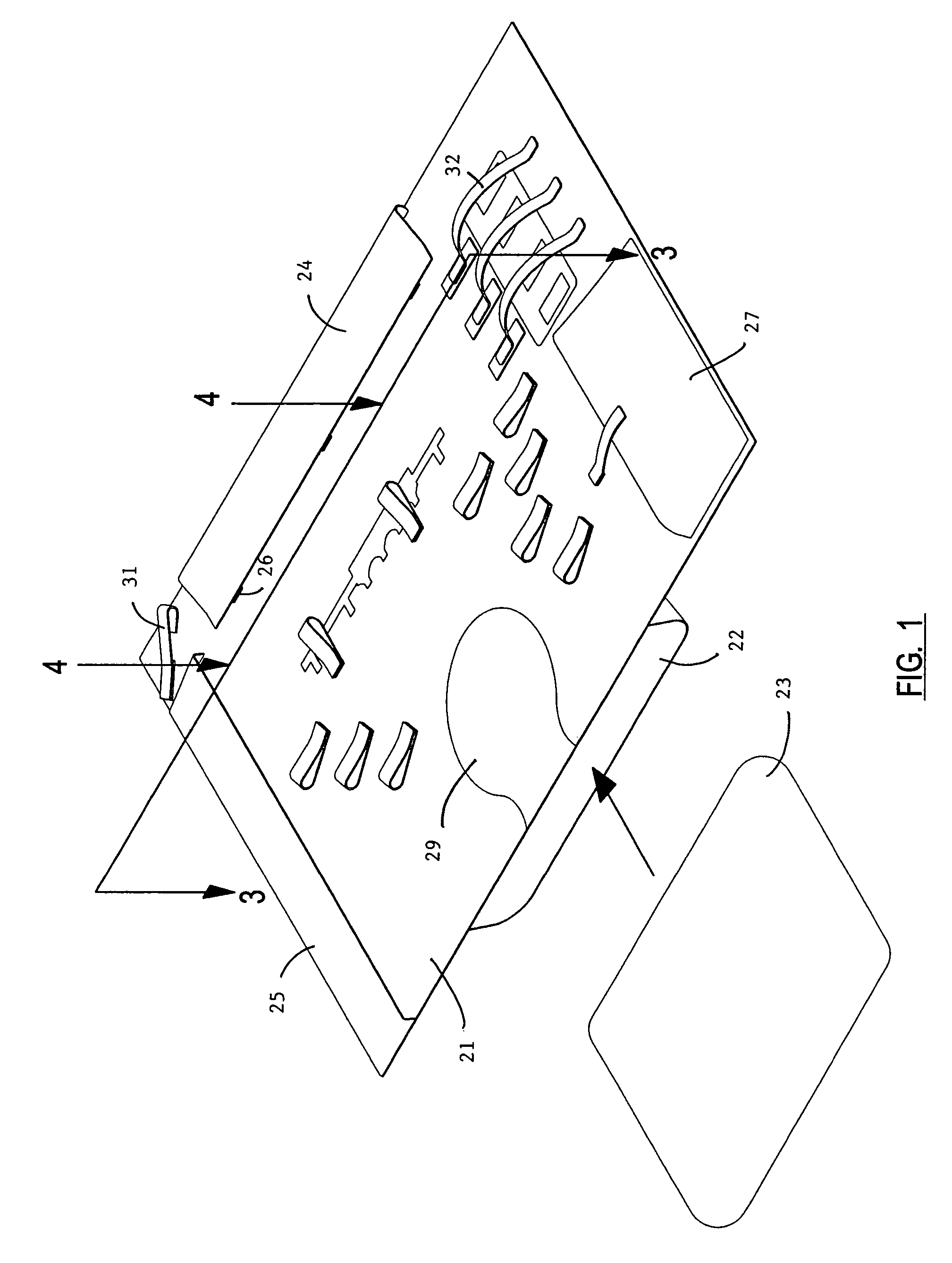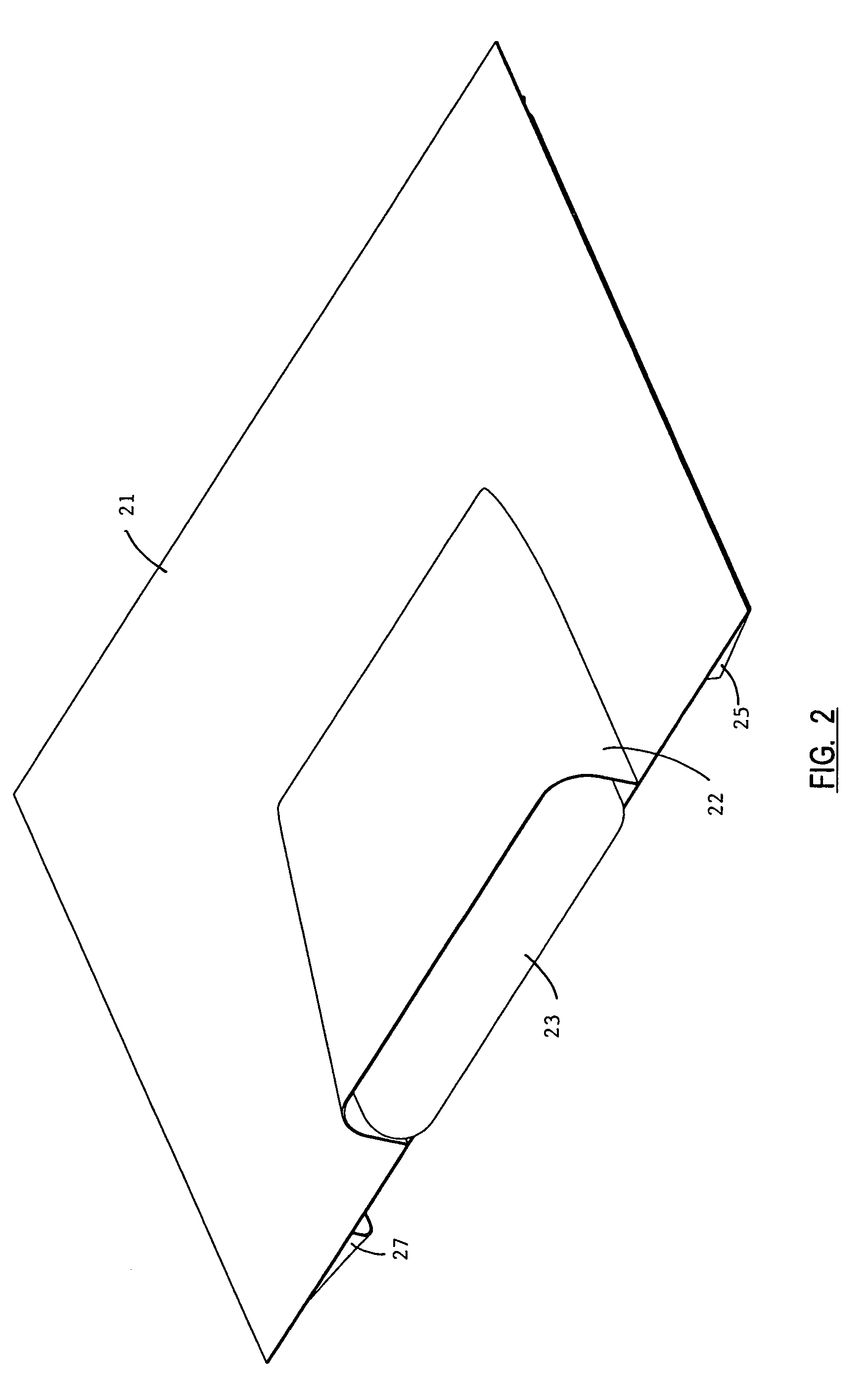Surgical coordinator for anesthesiologist and methods of use
an anesthesiologist and surgical coordinator technology, applied in the field of surgical coordinators for anesthesiologists and methods of use, can solve the problems of difficult teaching student doctors (residents and fellows), affecting the outcome of surgery, and affecting the life of patients, so as to avoid constricting or otherwise interrupting the flow through the line
- Summary
- Abstract
- Description
- Claims
- Application Information
AI Technical Summary
Benefits of technology
Problems solved by technology
Method used
Image
Examples
Embodiment Construction
[0052]Referring to the exemplary embodiment illustrated in the drawings wherein like reference characters designate like or corresponding parts throughout the several views, and referring particularly to FIG. 1, it is seen that the present invention includes a flexible pad 21 made of rubberized, plastic or paper material. The upper surface of pad 21 is provided with one or more holders 31 for holding the lines leading to / from a patient during and after surgery. The holders 31 may be detachable or fixedly attached to the pad 21. The holders 31 may be spring loaded, specially formed or biased in order to clamp and hold a line or tube, or they may be provided in the form of small straps having one end that is permanently attached to the pad, and the other end being detachable using Velcro®, a snap, a button, a buckle, or the like. These holders are used to hold the various lines and tubes in place against the pad 21, as described herein, without interrupting the flow therethrough. A di...
PUM
 Login to View More
Login to View More Abstract
Description
Claims
Application Information
 Login to View More
Login to View More - R&D
- Intellectual Property
- Life Sciences
- Materials
- Tech Scout
- Unparalleled Data Quality
- Higher Quality Content
- 60% Fewer Hallucinations
Browse by: Latest US Patents, China's latest patents, Technical Efficacy Thesaurus, Application Domain, Technology Topic, Popular Technical Reports.
© 2025 PatSnap. All rights reserved.Legal|Privacy policy|Modern Slavery Act Transparency Statement|Sitemap|About US| Contact US: help@patsnap.com



